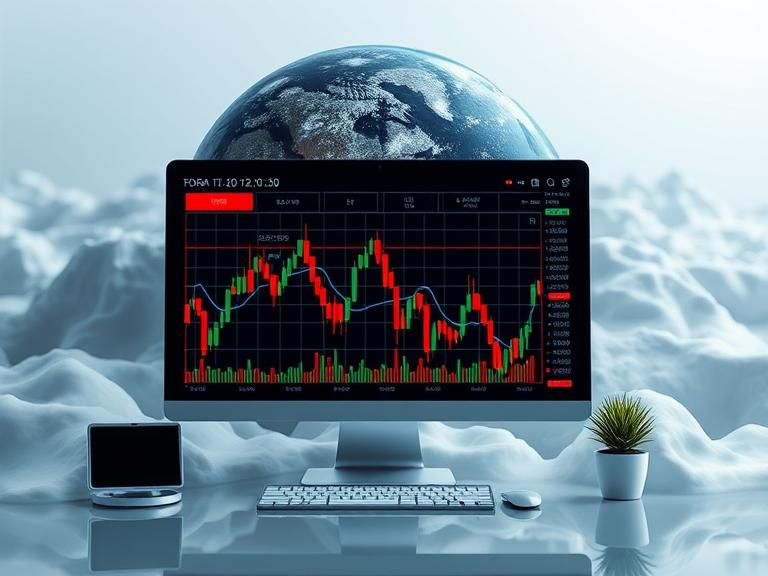Forex Trading – A Comprehensive Guide for Global Traders

Foreign exchange trading, commonly known as Forex trading, involves the buying and selling of currencies. The goal is to profit from fluctuations in the market. With a daily trading volume surpassing $7 trillion, Forex stands as the largest and most liquid financial market globally.
In contrast to stock markets, the The Forex market runs non-stop 24/5.. This lets traders from different time zones join in.
How Forex Trading Works
Forex trading involves currency pairs, where one currency is exchanged for another. The most traded pairs include:
- EUR/USD (Euro/US Dollar)
- GBP/USD (British Pound/US Dollar)
- USD/JPY (US Dollar/Japanese Yen)
- AUD/USD (Australian Dollar/US Dollar)
Traders predict how currency prices will change. They buy when they think prices will rise and sell when they expect prices to fall.
Essential Forex Trading Strategies
To maximize profits and minimize risks, traders use various strategies:
1. Day Trading
Day traders open and close positions within the same trading day, avoiding overnight risks. This approach requires rapid evaluation and swift choices.
2. Swing Trading
Swing traders hold their positions for days or weeks. They use technical and fundamental analysis to predict market movements.
3. Scalping
Scalpers make multiple small trades throughout the day to capitalize on minor price movements. It requires speed, precision, and high liquidity.
4. Trend Trading
This long-term strategy involves following established market trends and making trades in the direction of the trend.
5. Hedging
Hedging involves opening multiple positions to offset potential losses, reducing risk in volatile market conditions.
Key Factors Influencing Forex Markets
Forex markets are influenced by several factors:
- Economic Data: GDP growth, employment rates, and inflation impact currency values.
- Central Bank Policies: Interest rate decisions by banks like the Federal Reserve and European Central Bank affect Forex markets.
- Global Shifts: Wars, economic agreements, and political unrest can lead to significant currency shifts.
- Market Sentiment: Trader behavior and speculation can drive currency trends.
Risk Management in Forex Trading
Successful traders prioritize risk management by:
- Using Stop-Loss Orders: Automatically closing positions to prevent excessive losses.
- Managing Leverage: Controlling leveraged positions to avoid large losses.
- Investment Spread: Allocating funds across different currency pairs to reduce risk.
- Keeping a Trading Journal: Tracking trades to analyze patterns and improve strategies.
Best Forex Trading Platforms
Choosing the right trading platform is crucial for success. Here are some top platforms for global Forex trading:
- MetaTrader 4 (MT4): MT4 User-friendly, widely used by traders.
- MetaTrader 5 (MT5): MT5 Advanced features with more asset classes.
- cTrader: Renowned for its quick execution and user-friendly information.
- TradingView: Excellent for analyzing charts and strategy testing.
- NinjaTrader: Ideal for expert technical traders.
Steps to Start Forex Trading
- Choose a Reliable Broker: Ensure the broker is regulated and offers competitive spreads.
- Open a Trading Account: Register, verify identity, and deposit funds.
- Learn Market Basics: Study Forex ideas, tools, and ways to analyze.
- Practice with a Demo Account: Test strategies without risking real money.
- Develop a Trading Plan: Set goals, risk tolerance, and preferred strategies.
- Start Trading Live: Gradually enter trades while managing risks effectively.
Conclusion
Forex trading presents vast opportunities for global traders but requires knowledge, discipline, and effective risk management. No matter if you are new or an experienced trader, learning and adapting to market trends will boost your success in Forex. Start your journey with a solid strategy and a reliable platform to maximize your trading potential.
